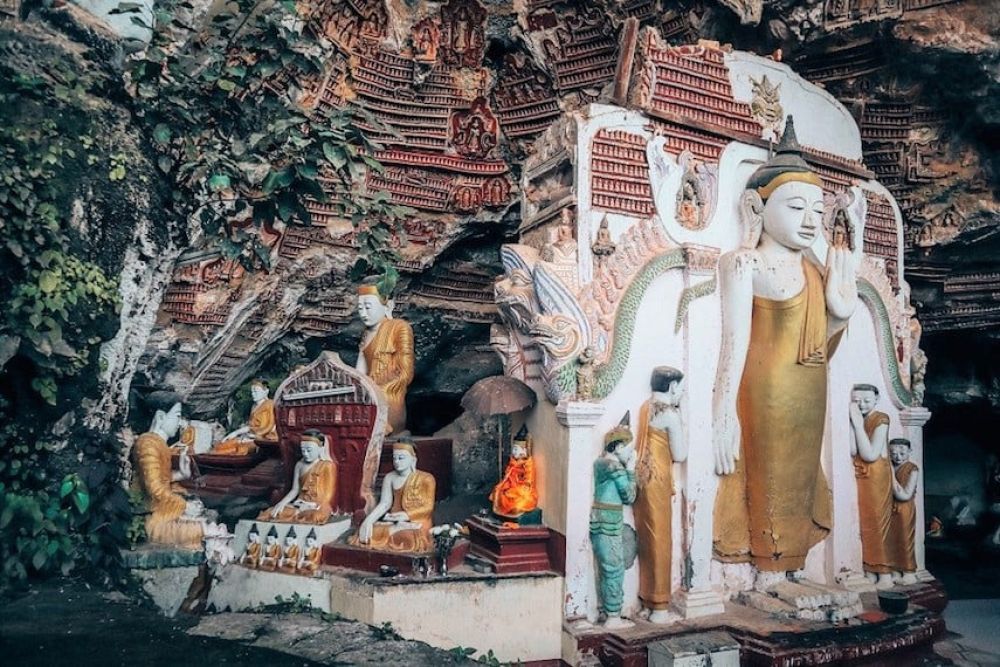

Nestled in the picturesque landscapes of Hpa-An in Myanmar, the Kawgun Cave is an enchanting destination that holds a special place in Myanmar's cultural and spiritual heritage. This natural limestone cave, adorned with thousands of Buddha images and carvings, dates back to the 7th century. It was during the reign of King Manuha of Thaton when the cave was first recognized as a place of worship.
While the Kawgun Cave has been a pilgrimage site for local Buddhists for centuries, it wasn't until the latter half of the 20th century that it began to gain attention from the wider world. With Myanmar gradually opening up to international tourists, sites such as Kawgun Cave started to feature on the tourism map.
The uniqueness of Kawgun Cave, with its walls and ceilings covered in a mosaic of clay Buddha statues and intricate carvings, began to draw the interest of travelers seeking off-the-beaten-path cultural experiences. Its historical significance and the surreal artistic expression of devotion made it an intriguing place for historians, archaeologists, and art lovers alike.
As Myanmar continued to develop its tourism infrastructure, Hpa-An, with Kawgun Cave as one of its highlights, started to see more visitors. Guesthouses, local guides, and transport options became more readily available, easing the way for tourists to discover the cave's wonders.
Political changes within Myanmar have historically influenced the flow of tourists to Hpa-An and Kawgun Cave. There have been periods when travel to certain regions, including Hpa-An, was restricted, directly affecting tourism to Kawgun Cave. Nonetheless, whenever the political climate allowed, the cave experienced spikes in tourist visits, signifying its undeniable allure to international travelers.
In recent years, sustainable and ethical tourism practices have started to gain traction in Myanmar. Tourists are increasingly seeking experiences that are respectful of the local environment and communities. There is a growing awareness about the conservation of sacred sites like Kawgun Cave and the wellbeing of the communities that maintain them. Tour operators and local stakeholders are gradually implementing measures to protect the cave's delicate ecosystem and cultural integrity while still allowing visitors to marvel at its beauty.
Looking to the future, there is optimism that Kawgun Cave will continue to be a destination for those who appreciate its combination of natural beauty, spiritual significance, and historical richness. As global travel adapts to emerging challenges, Kawgun Cave, along with the Hpa-An region, remains ready to welcome tourists who are eager to uncover the treasures of Myanmar's cultural landscape.
If planning a visit to Kawgun Cave, it is recommended to research local conditions and entry requirements as they can change frequently. Tourists are encouraged to engage with responsible travel agencies that prioritize the preservation of the site. Visitors should also be prepared for the tropical climate and respect local customs, particularly when visiting a site as sacred as Kawgun Cave.